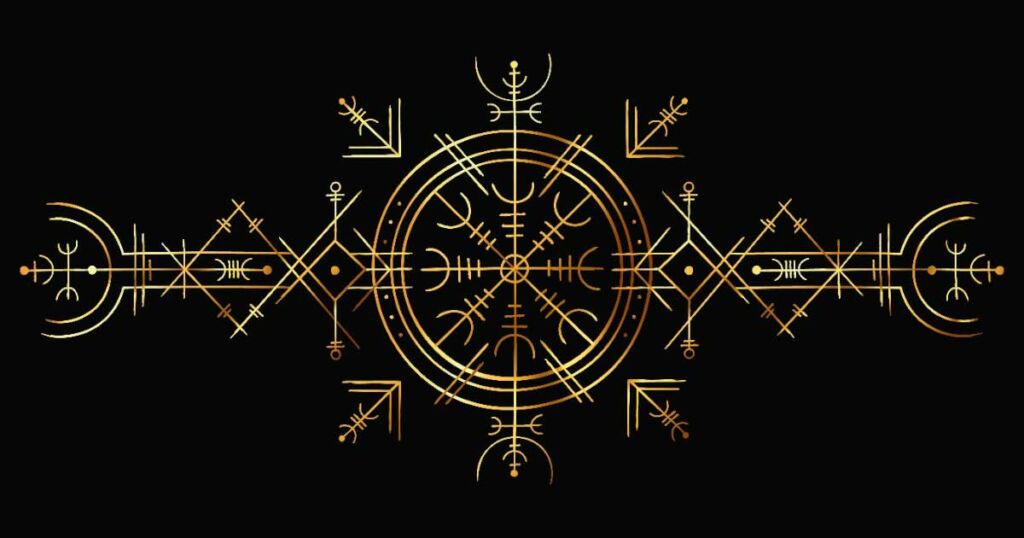“Loki: The Legend of the Mischievous God”
What is Loki’s identity? Modern portrayals of the Norse deity Loki have made him well-known, but who was Loki, according to Norse Mythology?
Loki can be a Æsir or a Jötunn, a friend or adversary, and frequently he is all of these things at once. Keep reading to learn about the trickster deity of Norse mythology.
Loki’s true form revealed
My lecturer once posed the question during a lecture on Viking artifacts why no sculptures of Loki had been discovered. After a while of talking, she offered forth her own theory:
Loki is the god of disorder. If you wanted to keep Loki away, you wouldn’t pray to Loki; you’d pray to the other gods.
Though Tom Hiddleston’s portrayal of Loki in the Marvel films has helped boost the character’s appeal, the character’s rise to prominence did not begin with the pagan Scandinavians but rather with the modern interest in Norse mythology.
Although modern portrayals of Loki can range from evil, like in Neil Gaiman’s American Gods, to misunderstood, as in Joanne Harris’ Runemarks, they all essentially use the same framework. Despite his nefarious and self-interested nature, Loki is often presented as endearing and charming. Even though he is rarely a stock “bad guy,” he is frequently cast in the role of antagonist.
In contrast to his continuous portrayal in contemporary culture, Loki is a rather inconsistent figure in Norse mythology.
 It is said that Loki is a deceptive deity.
It is said that Loki is a deceptive deity.
Loki is the Norse god of mischief and mischief-making. Sometimes he’s the one who gets the Æsir into trouble, and other times he’s the one who helps them get out of it with his wits.
It’s not easy to pin down Loki’s precise nature beyond his mischievous reputation. A Æsir and a Jötunn, he embodies both. He can be either male or female, however he usually is the former. The Æsir are both furious with and reliant on him. Ragnarok finds him assisting the Æsir and leading an army against them.
Confused? You may relax; we’re experiencing the same thing. Fasten your seatbelts; you’re in for a rough journey.
Æsir or Jötunn?
Even though there are many other people and creatures included in Norse mythology, the Æsir (the gods) and the Jötnar (commonly translated as “giants”) are the most prominent. The Æsir and the jötnar are polar opposites, with fighting being just as common as marriage and offspring production.
Many of the sir’s children come through unions with Jötnar rather than mortal women; Odin, for example, was born to a Jötunn. Norse mythology is patrilineal, meaning that lineages are traced via the father, hence despite this, he is still considered a Æsir.
Loki, like Odin, is the offspring of a Æsir and a Jötunn, but there is a key distinction between the two. Loki’s father, Fárbauti, is a Jötunn, and his mother, Laufey, is likely a Æsir but isn’t explicitly said to be one.
Loki is more properly categorized as a Jötunn because of this. However, things aren’t quite that easy.

Surnames in Viking times often consisted of the father’s given name followed by “son” or “daughter.” In modern-day Iceland, this custom persists. However, instead of adopting his father’s last name, Loki uses his mother’s given name, Laufeysson (literally, “son of Laufey”) as his surname.
In addition, Loki claims to be Odin’s blood brother in Lokasenna (“The Flyting of Loki”).
Loki said, “Remember, Othin, in the olden days, That we both our blood have mixed;
Although the circumstances behind Loki’s adoption of his mother’s name and his blood covenant with Odin remain shrouded in mystery, these facts imply that Loki initially decides to side with the Æsir rather than the Jötnar, despite his family history.
Did Loki have a gender?

Loki’s defiance of Norse gender standards is not limited to his biological parents. Within each narrative, he assumes a different gender.
Loki is typically portrayed as a man in myth and popular culture, including this article. Of course, this is not always the case.
When the Jötunn king Thrym steals Thor’s hammer Mjölnir, Thor and Loki must pose as Freyja and her handmaiden to retrieve it. This story is told in rymskvia (or Thrymskvida, “the Lay of Thrym”).
In spite of his guise, Thor continues to be referred to using masculine pronouns throughout the book. When Loki is in disguise, however, the language shifts to feminine pronouns, implying that his metamorphosis into a handmaiden is much more… complete:
After upon, Laufey’s son Loki said, “As thy maid-servant there I go with thee; We two shall speed to the giants’ abode.”
Close by, the sage serving girl patiently addressed the giant’s question: “From food had Freyja fasted, So burning was her love for Jotunheim.”
Moreover, while Loki is the father of the vast majority of his offspring, he is also the mother of one. To distract the stallion Svadilfari from his duties, Loki disguises himself as a female mare in one of the tales described in Gylfaginning (also known as “The Beguiling of Gylfi”).
Upon his return, Loki discovers he is expecting a child; the result is an eight-legged horse named Sleipnir, who eventually serves as Odin’s mount.
Loki, unlike the other Æsir, is not limited to a specific gender or the gender stereotypes that stem from it.
To what extent do you view this person as a friend or foe?
As was established from the outset, Loki is a god of mischief who, even while on their side, frequently causes difficulties for the Æsir. For some reason, he finds it amusing to shave off Sif’s hair.
But he always makes things right, usually to the sir’s benefit. Loki orders the Dwarves to fashion fresh golden locks for Sif, as well as spears and rings for Odin and Thor, a boar and ship for Freyr, and a hammer and an anvil for Loki himself.
Furthermore, Loki is often called upon to aid the Æsir despite the fact that he has committed no wrongdoing. After her father, Thjazi, is murdered by the sir, the Jötunn Skadi journeys to Asgard to get revenge.
Negotiations later, she accepts money in lieu of revenge for his murder, with the stipulation that the Æsir must make her laugh.
Loki achieves his goal with the help of a goat, some rope, and his own… extremities. The Æsir seldom expect such selflessness from one another and scarcely recognize Loki’s contributions to their cause.
Though first a friend, Loki becomes an adversary during the course of the stories. He enters uninvited to a feast hosted by the Æsir in Lokasenna and proceeds to insult each of them until Thor appears and threatens him. He prevents Baldr from being released from Hel in Gylfaginning by tricking the blind god Hör into murdering him.
When Loki leads the army of the dead out of Hel to do fight against the sir during Ragnarok, it is abundantly evident that Loki is no friend of the sir. Whether he was intended to be their enemy from the start or whether he was forced into this position by how the Æsir treated him is debatable.





